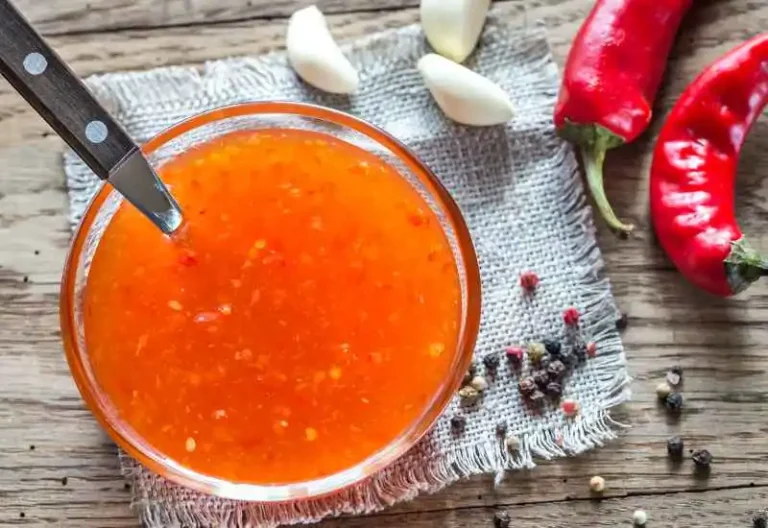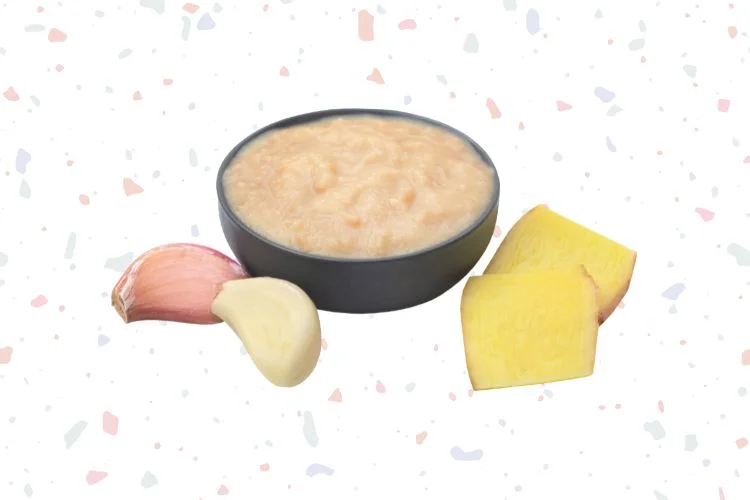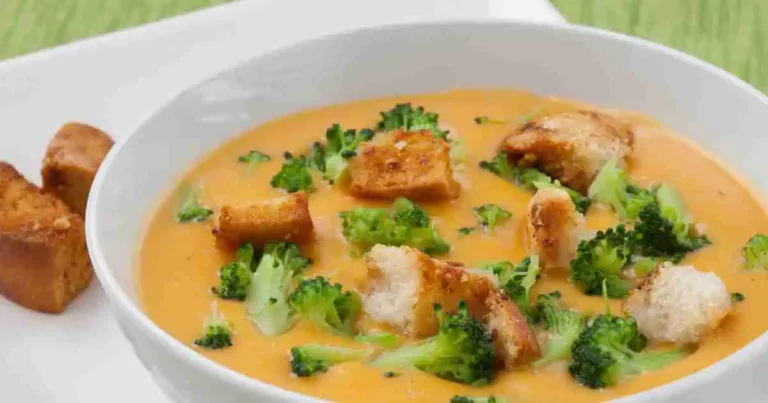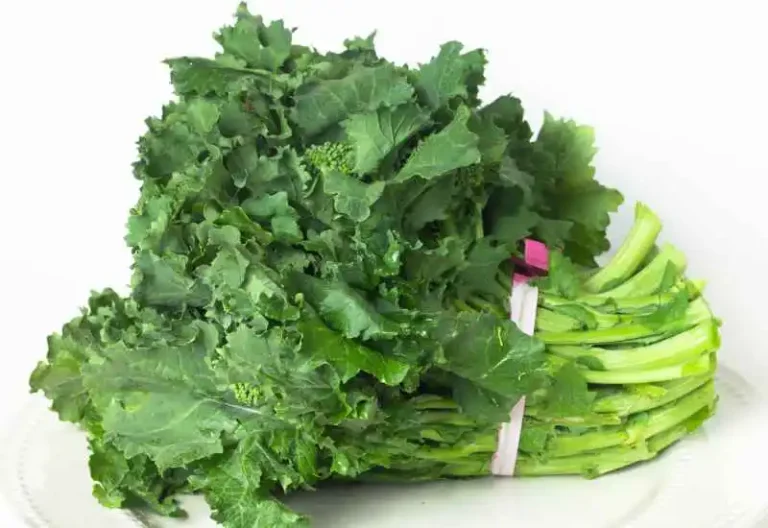Chili Garlic Sauce vs Sweet Chili Sauce
Looking to add some excitement to your meals? Look no further than chili garlic sauce and sweet chili sauce. These two condiments may sound similar, but they offer completely different flavor profiles that can elevate your dishes in unique ways.
Chili garlic sauce vs sweet chili sauce: Chili garlic sauce packs a punch with its fiery combination of chili peppers and garlic. It adds a bold and spicy kick to any dish, from stir-fries to marinades.
On the other hand, sweet chili sauce brings a perfect balance of sweet and tangy flavors. It combines the heat of chili peppers with a touch of sweetness, making it a versatile sauce for dipping, glazing, or drizzling.
While both chili garlic sauce and sweet chili sauce can bring some heat to your meals, they each offer their distinct taste that can cater to different preferences.
Christmas & Year-End Deals On Amazon !
Don’t miss out on the best discounts and top-rated products available right now!
*As an Amazon Associate, I earn from qualifying purchases.
Whether you’re a spice lover or have a sweet tooth, these sauces are sure to take your culinary creations to the next level.
So, let’s dive into a detailed comparison of chili garlic sauce and sweet chili sauce and explore how they can spice up your dishes in different ways.
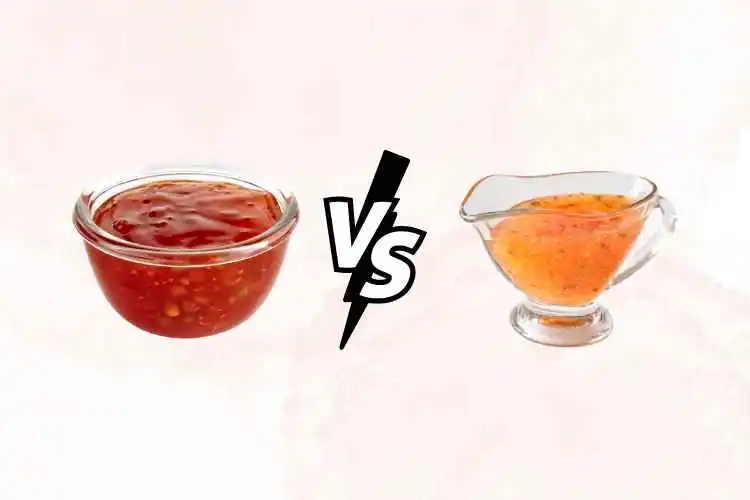
Flavor Profiles of Chili Garlic Sauce
Chili garlic sauce is a spicy condiment commonly used in Asian cuisine, particularly in dishes from countries like China, Thailand, and Vietnam. Its flavor profile can be broken down into several key components:
Heat from Chili Peppers
Chili garlic sauce derives much of its heat from chili peppers, typically red chili peppers or Thai bird’s eye chilies. The level of spiciness can vary depending on the type and amount of chili peppers used.
The heat sensation can range from mild to very hot, depending on individual tolerance and the specific brand or recipe of the sauce.
Garlicky Undertones
Garlic is a fundamental ingredient in chili garlic sauce, contributing a pungent and savory flavor profile.
The garlic adds depth and complexity to the sauce, complementing the heat from the chili peppers.
Acidity and Tanginess
Many chili garlic sauces contain vinegar or other acidic ingredients, which contribute to their tangy flavor profile.
The acidity helps balance the spiciness and richness of the sauce, providing a refreshing contrast to the heat and garlic.
Umami and Saltiness
Some versions of chili garlic sauce incorporate additional umami-rich ingredients like soy sauce or fermented bean paste.
These ingredients enhance the savory depth of the sauce and contribute to its overall complexity.
Salt is also a key component, helping to season the sauce and amplify its flavors.
Flavor Profile of Sweet Chili Sauce
Sweet chili sauce is a versatile condiment popular in Southeast Asian cuisine, particularly in dishes from Thailand and Vietnam. Its flavor profile contrasts with chili garlic sauce and emphasizes different elements:
Sweetness from Sugar
Sweet chili sauce is characterized by its prominent sweetness, which comes from sugar or sweetening agents like honey or palm sugar.
Christmas & Year-End Deals On Amazon !
Don’t miss out on the best discounts and top-rated products available right now!
*As an Amazon Associate, I earn from qualifying purchases.
The sweetness helps balance the heat from the chili peppers and makes the sauce appealing to a wide range of palates.
Mild to Moderate Heat
While sweet chili sauce contains chili peppers, the heat level is generally milder compared to chili garlic sauce.
The emphasis is more on the sweet and tangy flavors rather than intense spiciness.
Tangy and Sour Notes
Sweet chili sauce typically contains vinegar or citrus juices, which contribute to its tangy and slightly sour flavor profile.
The acidity helps brighten the sauce and provides a refreshing contrast to the sweetness.
Subtle Garlic and Umami
Unlike chili garlic sauce, the garlic flavor in sweet chili sauce is usually more subdued.
Some variations may include garlic for added depth, but it’s not as prominent as in chili garlic sauce.
Umami notes might be present, but they are usually less pronounced compared to chili garlic sauce.
Ingredients Used in Chili Garlic Sauce
Chili garlic sauce typically includes the following ingredients:
- Chili Peppers: The primary ingredient, providing the sauce with its characteristic heat. Common varieties include red chili peppers or Thai bird’s eye chilies.
- Garlic: Another essential component that contributes flavor depth and pungency to the sauce.
- Vinegar: Often used to add acidity and tanginess to the sauce. It also helps with preservation.
- Salt: Used for seasoning and to enhance the overall flavor profile of the sauce.
- Sugar: While not always present, some recipes may include sugar to balance the heat and acidity with sweetness.
- Water: Used to adjust the consistency of the sauce and to facilitate blending or cooking of the ingredients.
- Optional Ingredients: Some variations of chili garlic sauce may include additional ingredients such as soy sauce, ginger, or spices for added complexity and flavor.
Ingredients Used in Sweet Chili Sauce
Sweet chili sauce typically contains the following ingredients:
- Chili Peppers: Similar to chili garlic sauce, sweet chili sauce contains chili peppers, but the variety used may be milder to moderate in heat.
- Sugar: A primary ingredient that gives sweet chili sauce its characteristic sweetness. Sugar can come from sources like white sugar, palm sugar, or honey.
- Vinegar: Like chili garlic sauce, sweet chili sauce also includes vinegar for acidity and tanginess.
- Garlic: While less prominent compared to chili garlic sauce, garlic may still be included in sweet chili sauce to add depth of flavor.
- Salt: Used for seasoning and to balance the sweetness and acidity of the sauce.
- Water: Similar to chili garlic sauce, water is used to adjust the consistency of the sauce.
- Cornstarch (Optional): Some recipes may include cornstarch as a thickening agent to give the sauce a slightly thicker consistency.
- Optional Ingredients: Depending on the recipe and regional variations, additional ingredients like ginger, lime juice, or fish sauce may be added to enhance the flavor complexity of the sauce.
Heat Level of Chili Garlic Sauce vs Sweet Chili Sauce
The heat level of chili garlic sauce versus sweet chili sauce can vary significantly based on the types of chili peppers used and the specific recipe followed. However, in general, here’s a comparison of the typical heat levels:
Chili Garlic Sauce
Chili garlic sauce is known for its bold and spicy flavor profile. It tends to have a higher heat level compared to sweet chili sauce.
Christmas & Year-End Deals On Amazon !
Don’t miss out on the best discounts and top-rated products available right now!
*As an Amazon Associate, I earn from qualifying purchases.
The heat in chili garlic sauce primarily comes from the chili peppers, which can range from moderately spicy to very hot, depending on the variety used.
Common chili peppers used in chili garlic sauce include red chili peppers or Thai bird’s eye chilies, both of which pack a significant amount of heat.
The heat level in chili garlic sauce can vary depending on factors such as the proportion of chili peppers to other ingredients like garlic, vinegar, and sugar.
Some brands or homemade recipes may offer milder versions of chili garlic sauce to cater to different preferences, but overall, it’s typically spicier than sweet chili sauce.
Sweet Chili Sauce
Sweet chili sauce, as the name suggests, is characterized by its balance of sweetness and mild to moderate heat.
While it contains chili peppers like chili garlic sauce, sweet chili sauce tends to use milder varieties or adjusts the quantity of chili peppers to achieve a more subtle heat profile.
The sweetness of sweet chili sauce often serves to counterbalance the heat, making it more approachable for those who may be sensitive to spicy foods.
Sugar or sweetening agents like honey or palm sugar are commonly used to achieve the desired level of sweetness, which helps mitigate the intensity of the chili peppers.
Popular Dishes and Cuisines That Use Chili Garlic Sauce
- Asian Stir-Fries: Chili garlic sauce is a staple ingredient in many Asian stir-fry dishes, including stir-fried vegetables, noodles, and meats. It adds a spicy kick and garlicky flavor to the dishes.
- Sichuan Cuisine: Sichuan cuisine, known for its bold and spicy flavors, often incorporates chili garlic sauce in dishes like mapo tofu, kung pao chicken, and Sichuan-style hot pot.
- Vietnamese Pho and Noodle Soups: Chili garlic sauce is commonly served as a condiment alongside Vietnamese pho and other noodle soups. Diners can adjust the heat level of their soup by adding spoonfuls of chili garlic sauce.
- Thai Cuisine: Thai cuisine frequently uses chili garlic sauce in dishes such as pad Thai, drunken noodles (pad kee mao), and Thai basil chicken (pad kra pao).
- Marinades and Sauces: Chili garlic sauce is often used as a marinade for meats and seafood or incorporated into dipping sauces for spring rolls, dumplings, and grilled meats.
Popular Dishes and Cuisines That Use Sweet Chili Sauce
- Thai Appetizers: Sweet chili sauce is commonly served as a dipping sauce for Thai appetizers such as spring rolls, crispy wontons, and chicken satay.
- Asian Fusion Cuisine: Sweet chili sauce is a versatile condiment used in Asian fusion dishes like sweet chili chicken wings, sweet chili shrimp, and sweet chili glazed salmon.
- Salads and Wraps: Sweet chili sauce can be drizzled over salads or used as a dressing for wraps and sandwiches to add a sweet and tangy flavor.
- Dipping Sauce for Snacks: Sweet chili sauce is a popular dipping sauce for snacks such as chicken nuggets, french fries, and vegetable sticks.
- Grilled Meats and Seafood: Sweet chili sauce can be used as a glaze for grilled meats like chicken, pork, and shrimp, adding a sweet and spicy flavor to the dish.
How to Use Chili Garlic Sauce and Sweet Chili Sauce in Cooking
Uses of Chili Garlic Sauce in Cooking
- Stir-Fries: Add chili garlic sauce to stir-fries for a spicy kick and garlicky flavor. Mix it with soy sauce, ginger, and garlic for a classic stir-fry sauce.
- Marinades: Use chili garlic sauce as a base for marinades for meats, poultry, tofu, or seafood. Combine it with soy sauce, rice vinegar, sesame oil, and honey for a flavorful marinade.
- Dipping Sauces: Mix chili garlic sauce with soy sauce, rice vinegar, and a touch of honey for a delicious dipping sauce for spring rolls, dumplings, or crispy tofu.
- Noodle Dishes: Stir chili garlic sauce into noodle dishes such as pad Thai, lo mein, or sesame noodles for added heat and flavor.
- Sauces and Dressings: Incorporate chili garlic sauce into sauces and dressings for an extra punch of flavor. Blend it with mayonnaise for a spicy aioli or mix it with yogurt and herbs for a zesty dipping sauce.
Uses of Sweet Chili Sauce in Cooking
- Dipping Sauce: Serve sweet chili sauce as a dipping sauce for appetizers like spring rolls, fried tofu, or chicken skewers. It pairs well with crispy and savory snacks.
- Glaze for Grilled Meats: Use sweet chili sauce as a glaze for grilled meats such as chicken, pork, or shrimp. Brush it on during the last few minutes of grilling for a sweet and sticky coating.
- Salad Dressing: Whisk sweet chili sauce with rice vinegar, lime juice, and sesame oil to create a flavorful dressing for salads, slaws, or noodle salads.
- Sandwich and Wrap Spread: Spread sweet chili sauce on sandwiches or wraps for a sweet and spicy kick. It adds a burst of flavor to sandwiches filled with grilled chicken, vegetables, or tofu.
- Stir-Fry Sauce: Mix sweet chili sauce with soy sauce, garlic, and ginger to create a quick and easy stir-fry sauce. Toss it with vegetables, tofu, or meat for a flavorful stir-fry dish.
- Condiment for Rice Dishes: Drizzle sweet chili sauce over rice dishes such as fried rice or grain bowls for a touch of sweetness and heat.
Conclusion
In selecting between chili garlic sauce and sweet chili sauce, consider your palate and dish requirements. Chili garlic sauce offers bold spiciness and garlic depth, ideal for robust Asian stir-fries and marinades.
Sweet chili sauce provides a harmonious blend of sweetness, tanginess, and mild heat, perfect for dipping, glazing, and enhancing a variety of dishes, notably Thai-inspired cuisine. Tailor your choice based on desired flavor intensity and culinary context.

